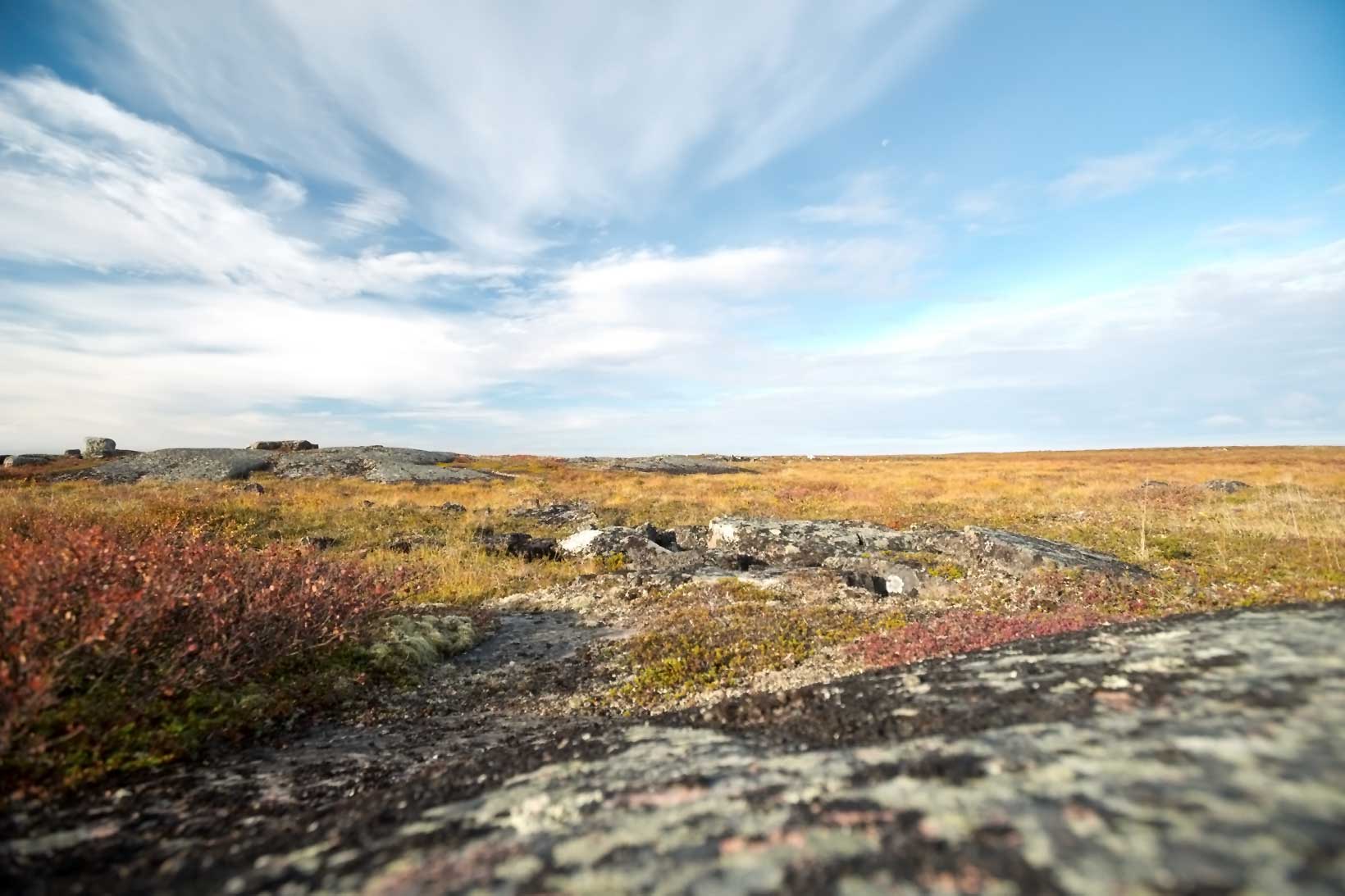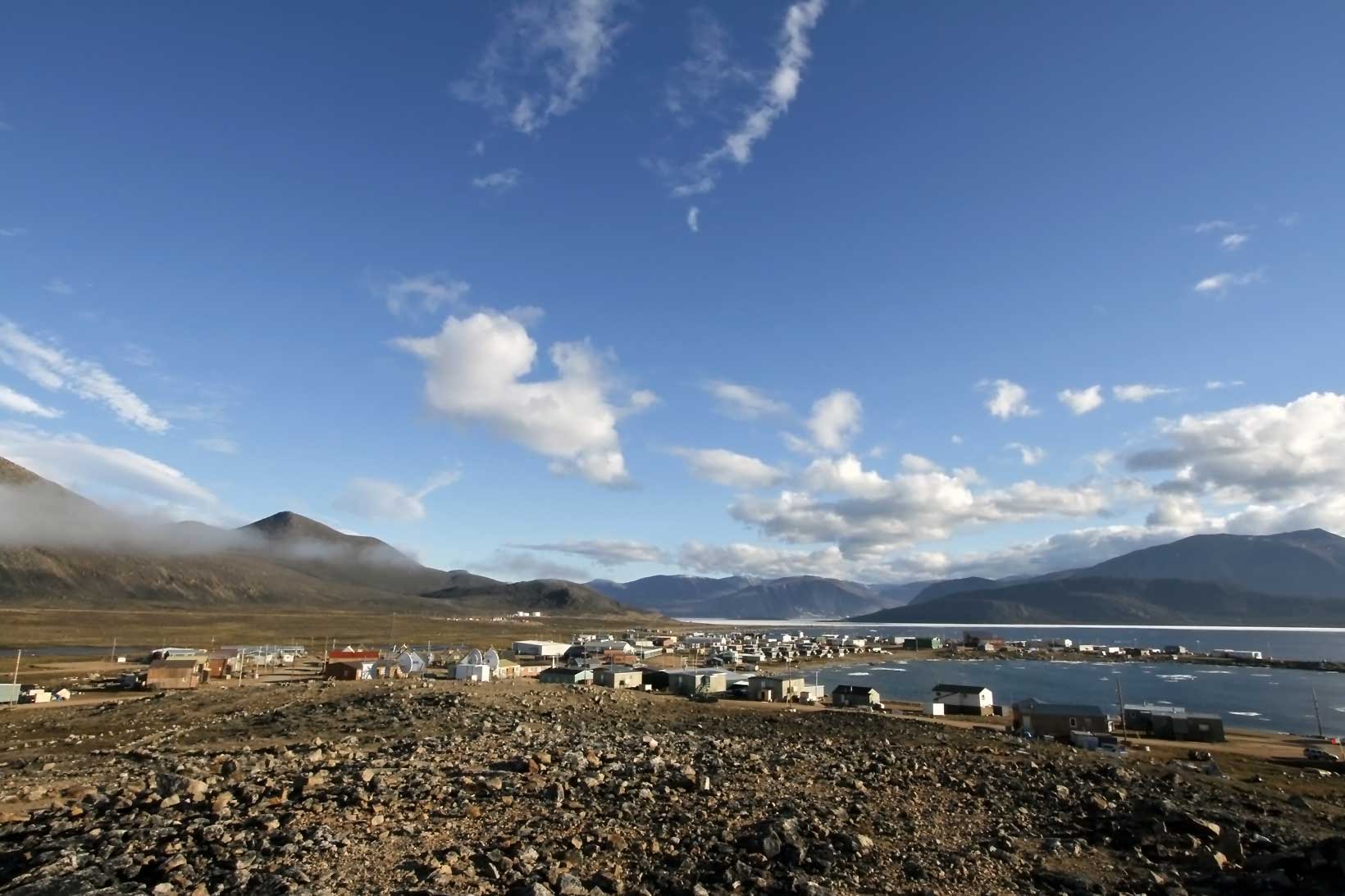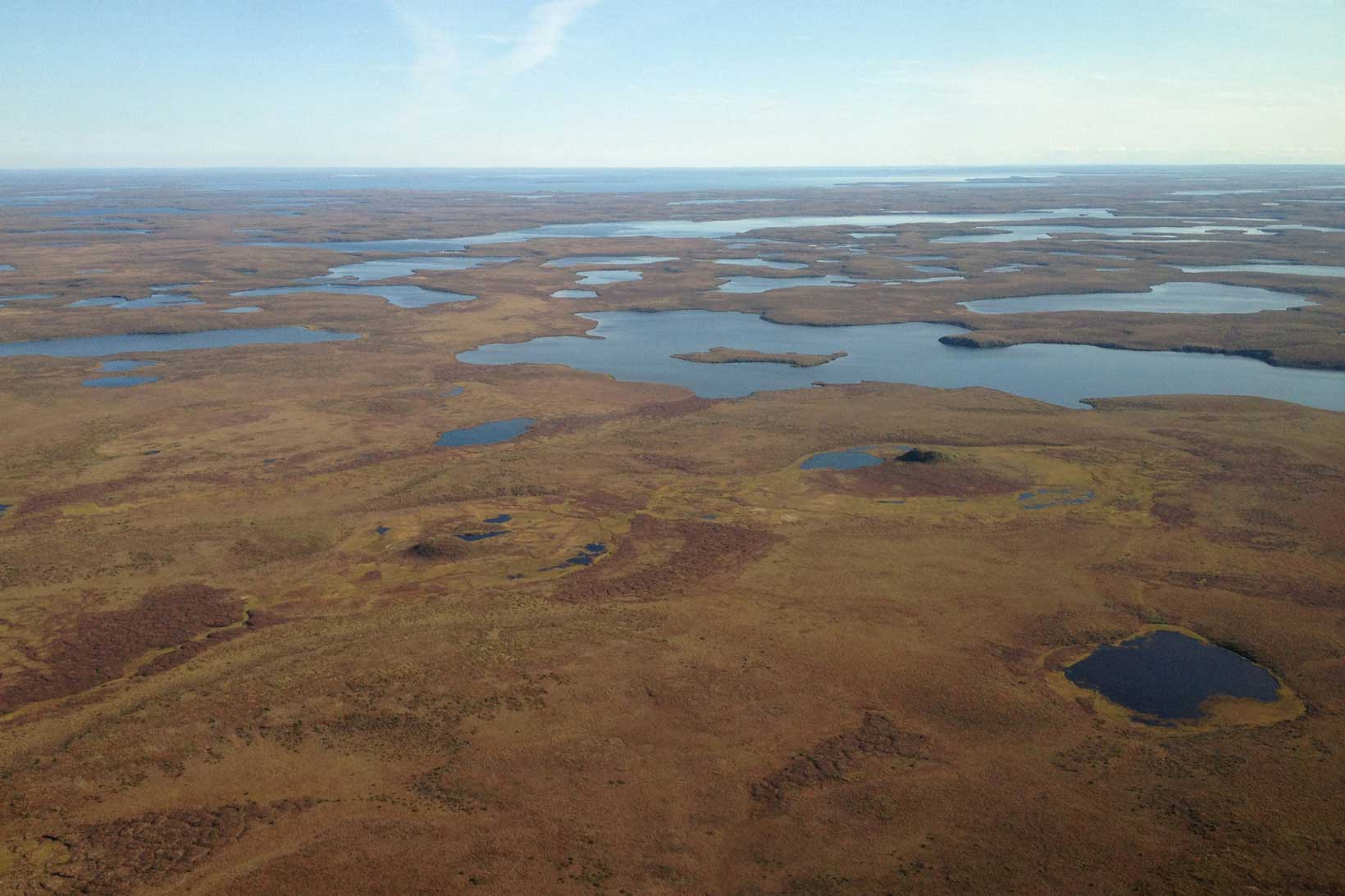Parts of the Arctic that are not permanently frozen or covered in ice year-round, where the less extreme climate means that ice and snow melt for a period during the summer months, are described as being periglacial.
Periglacial Nunavut
Nunavut, the most northerly territory of Canada, is located in the periglacial Arctic.


Task: Use the map to take a look around at the features of Nunavut.
Climate data for Iqaluit, Nunavut
| Month | Average temperature (°C) | Precipitation (mm) |
| January | -25.9 | 24 |
| February | -25.7 | 20 |
| March | -20.5 | 27 |
| April | -12.2 | 32 |
| May | -3.5 | 45 |
| June | 3.6 | 63 |
| July | 9 | 74 |
| August | 7.7 | 94 |
| September | 1.7 | 79 |
| October | -4.8 | 53 |
| November | -12.7 | 46 |
| December | -19.5 | 35 |
- Data source: ClimateData.Org
- Use the data above to draw a climate graph for Iqaluit, Nunavut, in the Arctic periglacial region. Annotate the key features that you think makes this climate distinctive. Consider, for example, the length of the growing season and the amount and distribution of precipitation throughout the year.
- What characteristics do you think vegetation would need to be able to grow in these conditions?
Tundra
In the summer months, temperatures in periglacial areas such as Nunavut rise above freezing, and the top layer of soil thaws, although it remains underlain by permanently frozen ground (permafrost).
The thin layer of unfrozen soil above the permafrost supports vegetation typical of the tundra biome. The name ‘tundra’ comes from the Finnish word for a barren or treeless land. Tundra vegetation has adapted to growing in thin, nutrient poor soils which are often waterlogged due to poor drainage: water is prevented from infiltrating through the frozen permafrost beneath it. In the tundra of Nunavut, species such as mosses, sedges, grasses and saxifrages have adapted to the conditions in the following ways:
- Low-growing and cushion-like form for protection and insulation from the strong winds
- Hairy stems to retain heat
- Thick waxy leaves to reduce transpiration
- Shallow roots that grow in the thin layer of soil above the permafrost
- The ability to flower and produce seeds in a short period of time to take advantage of the short growing season, which may be only 50-60 days long
- The ability to photosynthesise in low temperatures.
Aaju talks about the summer flowering of the tundra, and the extremely small trees. “If you get lost in the forest, just stand up!”
In Nunavut, animal species such as the caribou are reliant on the summer food options provided by the tundra vegetation. In winter, hardy lichens provide an important food source. Herbivores in turn support predatory species such as the Arctic wolf; in total 20 species of mammal inhabit the Canadian tundra, including of course the polar bear.
- How are the animals living in the tundra adapted to the conditions here?
Periglacial processes and landforms
The cyclical freezing and thawing that occurs each year in periglacial regions results in a set of unique landscape processes and features.


- Did you know, the largest (and oldest) pingos in the world are found on the MacKenzie Delta in northern Canada? They are over 50 m high and 300 m wide.
What features might you find in periglacial regions?
- Download the Landforms card sorting activity. Match the landform with its description and the process by which it formed.
- Familiarise yourself with the type and distribution of periglacial landforms in Yukon, northwest Canada using the Yukon Landform Atlas.